The world of Roman craftsmen often remains overshadowed in studies of the Roman Empire economy, yet these forgotten artisans played a pivotal role in shaping urban life. This article delves into their diverse trades, economic contributions, and social significance within ancient cities.
Understanding the work and lives of Roman craftsmen offers crucial insights into the dynamics of urban economies and societies in antiquity. Their skills supplied essential goods and services, supported commercial networks, and influenced the physical and social landscape of Roman urban centers.
By exploring their workshops, household structures, apprenticeship systems, and professional organizations, you gain a clearer picture of how these artisans sustained not only their own livelihoods but also the daily functioning of entire cities. Recognizing their impact enriches our appreciation for the complexity and vibrancy of urban life in the Roman Empire.
The Various Trades of Roman Craftsmen
Roman craftsmen were involved in many specialized trades, each playing a vital role in providing goods and services to the city economy. Their expertise reflected the intricacies and requirements of urban life throughout the empire.
1.1. Wool-combing
This trade involved preparing raw wool fibers for spinning and weaving. Wool-combers played a critical role in textile production, ensuring quality and consistency for garments and household fabrics.
1.2. Leatherworking
Leather artisans transformed animal hides into durable products like footwear, belts, harnesses, and bags. Their work required mastery of tanning processes and precise craftsmanship to meet both everyday needs and luxury demands.
1.3. Pottery
Potters produced functional vessels used for storage, cooking, and transport. Different styles and techniques—such as terra sigillata—catered to diverse markets. Pottery workshops often served local communities while also exporting wares across the empire.
1.4. Baking
Bakers crafted bread and other baked goods that formed staples of the Roman diet. Operating from bakery workshops or tabernae, their products supported urban populations with daily essentials.
1.5. Textile Production
Beyond wool-combing, textile crafts included spinning, dyeing, weaving, and finishing fabrics. These intertwined processes depended on skilled artisans who maintained high standards for both common clothing and luxury textiles.
Each trade had its own technical knowledge, tools, and social status within urban areas. These distinct crafts often clustered geographically but remained interconnected within the broader economic structure of Roman cities.
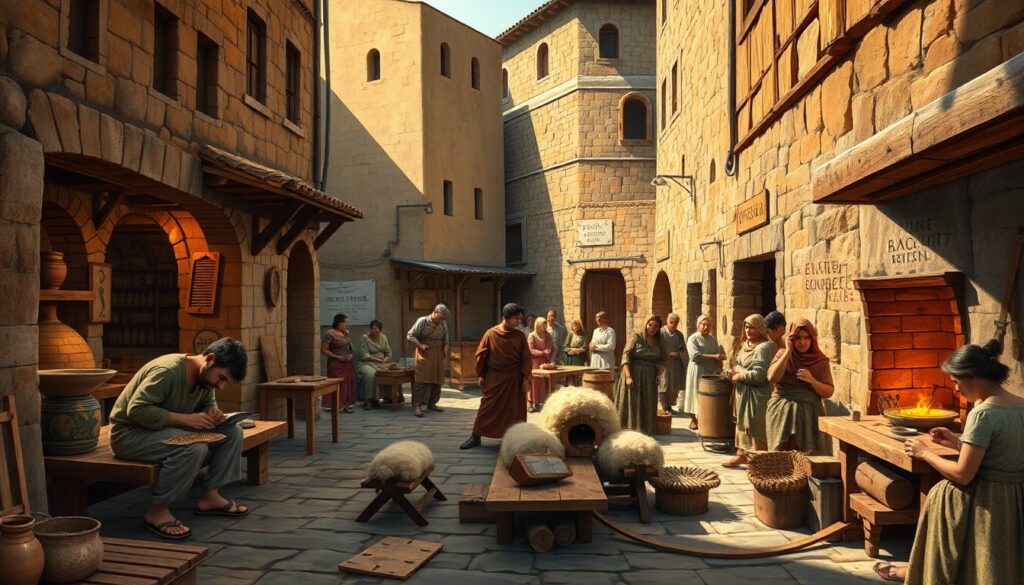
Workshops and Tabernae: Commercial Hubs of Roman Cities
Workshops and tabernae were crucial for production and trade in Roman cities. They weren’t just places of work; they were lively centers where craftsmen made products, offered services, and engaged with clients.
The Role of Workshops
Workshops were specialized locations for creating various items — such as pottery, metalwork, textiles, and leather goods. Although often small, these spaces operated efficiently with all the necessary tools for expert craftsmanship. The design of workshops catered to practical requirements:
- Areas specifically designated for storing raw materials
- Workbenches or kilns customized for particular trades
- Room for apprentices or helpers to learn and contribute
The Function of Tabernae
Tabernae acted as retail spaces or small shops usually connected to or in close proximity with workshops. These businesses offered direct access to buyers, selling completed items like food, clothing, or household products. Some tabernae also functioned as inns or taverns, combining social activities with commerce.
Economic Impact of Workshops and Tabernae
Both workshops and tabernae played a significant role in boosting the city’s economy by:
- Promoting local production that decreased dependence on imported goods
- Fostering social interactions among craftsmen, traders, and customers
- Ensuring the economic sustainability of artisan households through consistent trade
Their strategic location along busy roads or market squares helped create lively commercial areas. These centers not only supported everyday life in the city but also nurtured relationships that upheld Rome’s intricate urban economy.
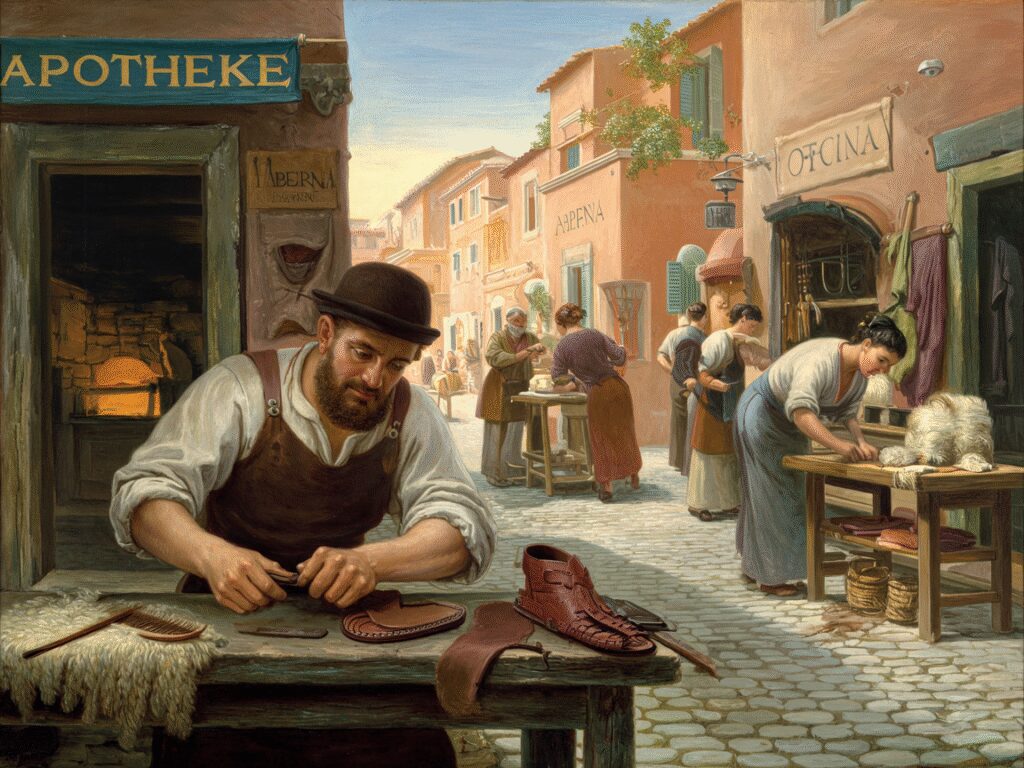
The Structure and Functioning of Artisan Households
Artisan households were essential economic units in Roman cities. They combined family labor with hired workers and apprentices to maintain production. These households usually consisted of the artisan master, family members, and often several apprentices or trained slaves.
Key characteristics of artisan households:
- Family as core workforce: The artisan’s spouse, children, and sometimes extended relatives contributed directly to the production process. Children grew up learning skills informally before entering formal apprenticeships.
- Apprenticeships beyond the family: While some sons remained within their father’s workshop, many apprenticed with other masters to diversify skills and build independent careers. This system allowed craftsmen to maintain trade secrets while promoting skill transmission across generations.
- Integration of non-family labor: Skilled slaves or freedmen frequently worked alongside family members, expanding production capacity. These individuals could sometimes earn freedom through long-term service.
- Economic interdependence: Artisan households combined economic activities such as procurement of raw materials, manufacturing, and retail sales—often conducted from the same premises.
This model created tightly knit units capable of adapting to market demands and sustaining craft traditions over time. The artisan household functioned not just as a home but as a workshop, training center, and commercial enterprise—essential components in understanding The Forgotten Artisans: How Roman Craftsmen Shaped Urban Life.
It is important to note that this model is not entirely dissimilar to modern-day public works projects where skilled labor is often combined with family-run businesses in various sectors, maintaining a unique blend of tradition and modernity in their operations.
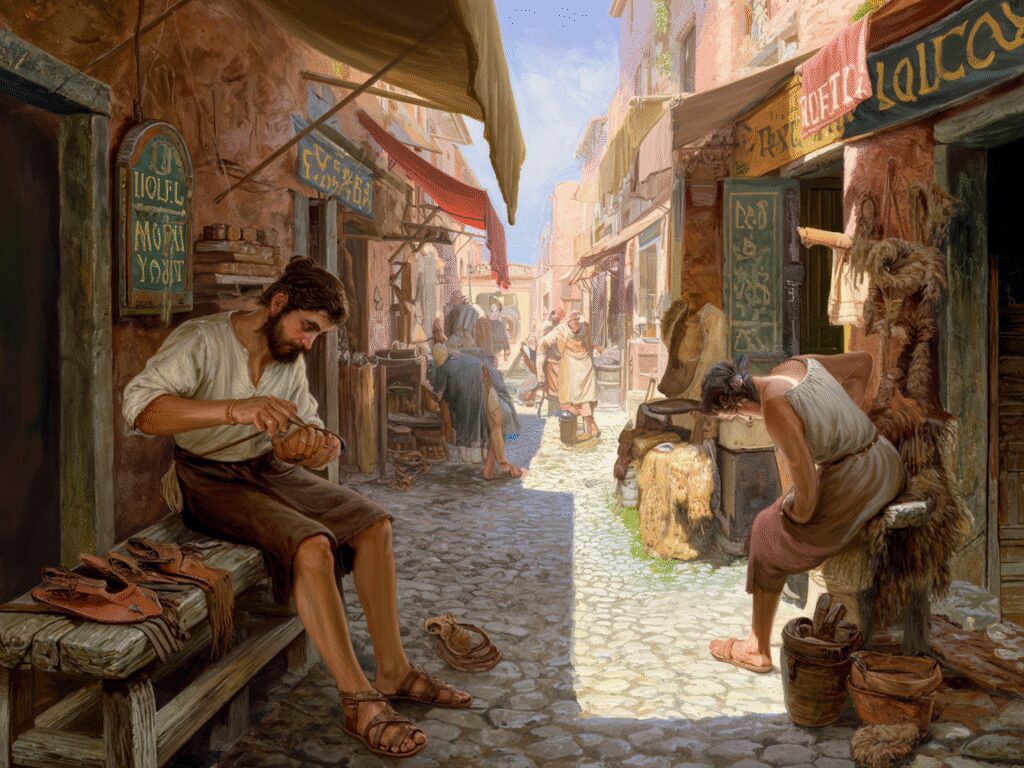
Apprenticeship Practices Among Roman Craftsmen
The apprenticeship system was central to the transmission of skills among Roman craftsmen, ensuring the continuity and refinement of various trades. Young apprentices, often starting in early adolescence, entered workshops under the supervision of experienced masters. This arrangement was not only educational but also contractual, sometimes formalized through legal agreements that outlined duties, duration, and conditions.
Key features of Roman apprenticeship practices include:
- Diverse Craft Training: Apprenticeships varied widely depending on the craft—potters learned wheel-throwing and kiln operation, while leatherworkers mastered tanning and stitching techniques.
- Skill Transmission: The hands-on nature of training guaranteed that practical knowledge passed down was detailed and precise. Techniques were transmitted orally and visually rather than through written manuals.
- Social Mobility and Networking: Apprentices gained valuable social connections within their crafts. Completing an apprenticeship could lead to independent workshop ownership or joining a guild.
- Non-Familial Apprentices: Many apprentices were not relatives of the master craftsman, highlighting a professional approach to skill development rather than purely familial succession.
- Duration and Commitment: Apprenticeships typically lasted several years, reflecting the complexity and expertise required for full mastery.
This system shaped urban economies by maintaining high standards in craft production while fostering new generations of skilled artisans ready to contribute actively to city life.
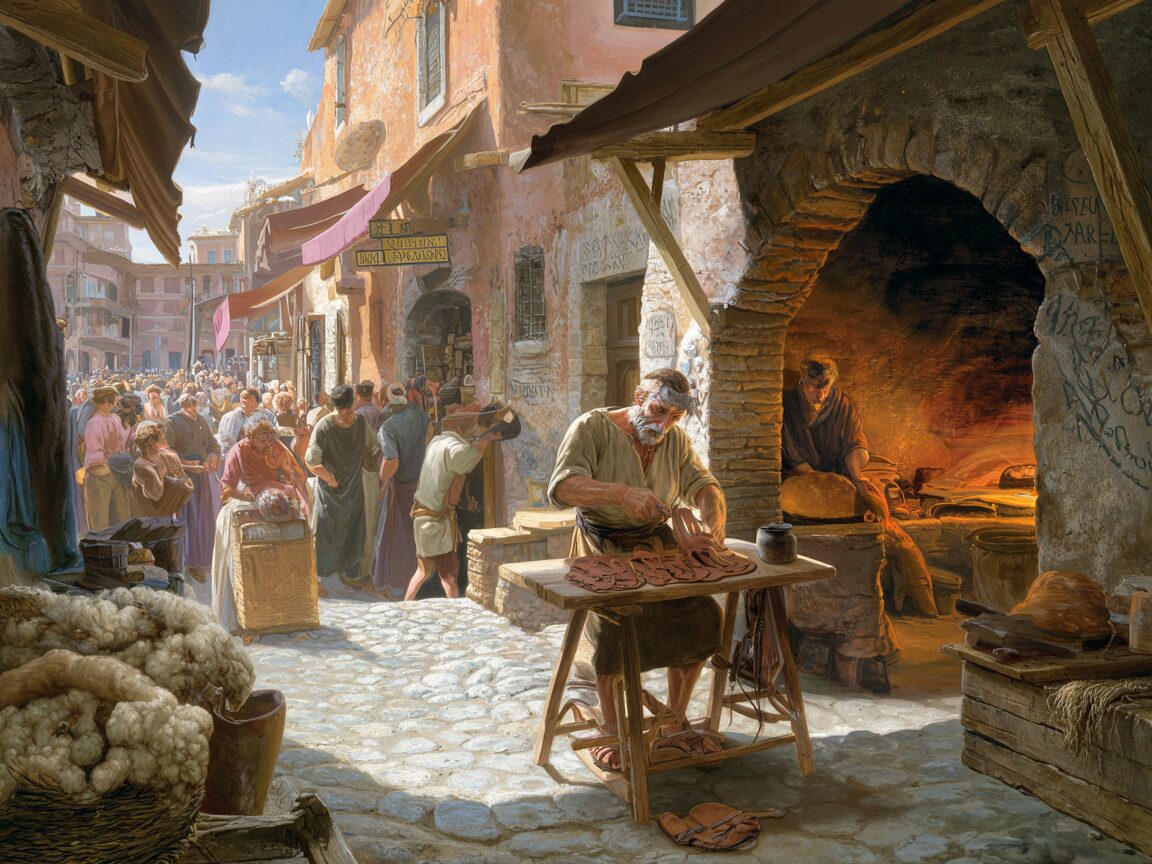
Guilds and Professional Associations: Ensuring Trade Continuity
Guilds and professional associations were essential in keeping Roman crafts stable and continuous. These organizations were either formal or informal groups that brought together craftsmen practicing the same trade. Their influence went beyond just social gatherings and served several important purposes:
- Regulation of Standards: Guilds established quality standards for products, ensuring consistency across workshops. This helped protect the reputation of trades and fostered consumer trust in urban markets.
- Economic Support: Members benefited from collective bargaining power and mutual aid. Guild funds often provided assistance during illness, old age, or economic hardship, acting as an early form of social security.
- Training and Skill Transmission: Professional associations monitored apprenticeship practices, helping to standardize training and preserve specialized knowledge within trades.
- Political Influence: Some guilds held significant social standing, enabling them to negotiate with city authorities on matters like taxation, trade regulations, or public contracts.
Inscriptions and ancient texts reveal various guild names tied to specific crafts such as bakers (collegia pistorum), metalworkers (collegia fabrorum), and fullers (collegia fullonum). These groups often met in dedicated meeting halls or sanctuaries, emphasizing their communal identity and shared interests.
Guild membership also reinforced social networks among artisans, connecting households across the city. Such associations played a crucial role in sustaining crafts through generations, anchoring urban economies in a complex web of cooperation and competition.
Women in the Craft Economy: A Hidden Narrative
Women artisans played a significant yet often overlooked role in Roman urban economies. Their participation extended beyond domestic confines into various aspects of craft production and trade, making them essential contributors to city life.
Key areas of female involvement include:
- Textile Production: Many women worked as weavers, spinners, and dyers. Textile crafts were among the most common female trades, with some managing workshops or participating in guilds related to cloth-making.
- Food Preparation and Sale: Women frequently engaged in baking, brewing, and selling foodstuffs. Their presence in markets and tabernae helped sustain local economies.
- Pottery and Small-Scale Manufacturing: Evidence from inscriptions and archaeological finds points to women involved in pottery workshops or producing household goods such as lamps and ceramics.
- Trade and Commerce: Some women acted as independent traders or partners in family businesses, showing a degree of economic agency rarely acknowledged in traditional narratives.
The Forgotten Artisans: How Roman Craftsmen Shaped Urban Life highlights that female participation was vital for maintaining the diversity and resilience of urban crafts. These women balanced household duties with skilled labor, often managing apprentices or supervising production lines.
Their contributions challenge the assumption that craftwork was exclusively male-dominated. Recognizing women artisans expands our understanding of how Roman urban economies functioned on multiple levels—socially, economically, and culturally.
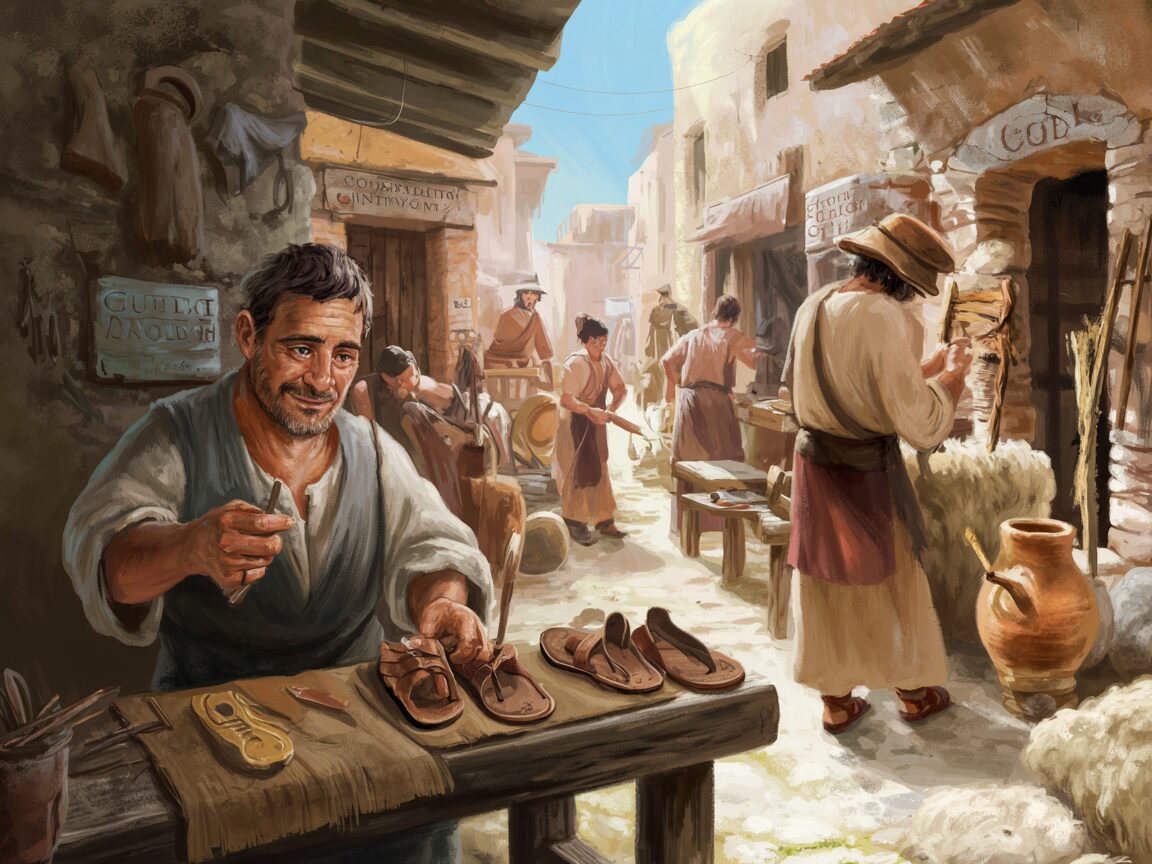
Spatial Dynamics: Craft Districts Within Roman Cities
Roman cities displayed a notable pattern in the spatial distribution of craftsmen, with many trades clustering into specialized craft districts. These areas became focal points for production, exchange, and social interaction among artisans.
Key characteristics of craft districts include:
Trade Specialization: Certain neighborhoods concentrated specific crafts such as pottery, metalworking, or textile production. For example, in Pompeii, the fullonicae (laundry workshops) were often found grouped together, creating zones dedicated to textile finishing.
Economic Efficiency: Clustering allowed craftsmen to share resources like raw materials and tools more easily. It also facilitated interaction with merchants and customers who knew where to find particular goods or services.
Social Networks: Proximity strengthened relationships among artisans. Shared workshops and tabernae fostered cooperation and sometimes competition that pushed innovation.
Urban Planning Influence: Evidence suggests city planners occasionally designated spaces for certain crafts, reflecting the importance of managing noise, pollution, and traffic generated by these activities.
Archaeological excavations reveal that while some crafts remained concentrated in specific districts, others dispersed across urban areas depending on demand and social factors. The spatial arrangement of these districts contributed significantly to the vibrancy and functionality of Roman urban life by organizing production in ways that supported both economic activity and community cohesion.
Archaeological Evidence Unveiling the Lives of Roman Artisans
Archaeology offers a direct glimpse into the everyday lives of Roman craftsmen, revealing aspects that written records cannot convey. Excavated urban sites have yielded tools, remnants of workshops, and completed items that showcase the skills and economic functions of artisans.
Key types of archaeological evidence include:
- Workshop Structures: Excavations often reveal layouts of workshops equipped with furnaces, kilns, anvils, or workbenches. These spaces highlight the diversity of crafts such as pottery, metalworking, and leather production.
- Tool Assemblages: Finds of specialized tools like combs for wool processing or molds for metal casting demonstrate the precision and variety in craft practices.
- Waste and Byproducts: Discarded shards, slag from smelting, or leather scraps provide clues about production volume and techniques.
- Inscriptions and Graffiti: Etched names, marks, or signs found near workshops offer insights into ownership, artisan identity, and sometimes even pricing or trade secrets.
The geographical spread of these artifacts within cities confirms that related crafts were often located in specific neighborhoods. This physical evidence helps us understand how craftsmen organized their work and played a role in urban economies not just through their products but also by being an integral part of city life.
Ongoing archaeological studies are further enhancing our understanding of artisans’ social and economic standing by revealing information about their living situations connected to their workplaces.
Legal Frameworks Supporting Craftsmen’s Work
Legal regulations played a crucial role in shaping the working conditions and economic rights of Roman craftsmen. The Roman labor law system provided a framework that governed labor relations, property rights, and contractual obligations within artisan communities. Understanding these laws helps to uncover how craftsmen navigated their social and economic environments.
Key elements of these legal frameworks include:
Property Rights: Artisans often owned their workshops and tools, which were protected by Roman property laws. Ownership extended not only to physical assets but also to intellectual property like trade secrets or specific techniques, safeguarding the craftsman’s investment and craftsmanship.
Labor Relations: Apprenticeship contracts were legally binding agreements detailing the terms of service, obligations, and duration of training. These contracts ensured skill transmission while protecting both masters and apprentices from exploitation.
Contracts and Trade: Craftsmen engaged in formal contracts for supply and sale of goods. These agreements were enforceable under Roman commercial law, providing stability and predictability in urban markets.
Guild Regulations: Although less formalized than in later periods, certain crafts had associations with internal rules that regulated membership, quality standards, and dispute resolution, reflecting early forms of professional self-governance.
Legal texts and inscriptions highlight how these frameworks supported economic activity among The Forgotten Artisans: How Roman Craftsmen Shaped Urban Life, reinforcing their integral role in maintaining order and fairness within the bustling urban economies of the Roman Empire.
Conclusion
The legacy of Roman artisans offers invaluable insights into the fabric of ancient urban life. The Forgotten Artisans: How Roman Craftsmen Shaped Urban Life highlights their central role in economic vitality, social networks, and technological innovation within cities.
Studying these craftsmen reveals:
- The complexity of urban economies supported by diverse trades.
- The significance of apprenticeship and guild systems in preserving skills.
- The active participation of women in craft production.
- How legal frameworks facilitated labor relations and property rights.
- The spatial organization of craft districts reflects urban development history.
Their contributions extended beyond mere production; they shaped social dynamics and influenced city planning. Appreciating the Roman artisans legacy deepens our understanding of how ancient cities functioned and evolved, emphasizing that behind monumental architecture and grand politics were skilled hands crafting everyday life. This perspective enriches archaeological interpretation and urban history alike, inviting renewed recognition for these once overlooked figures.

